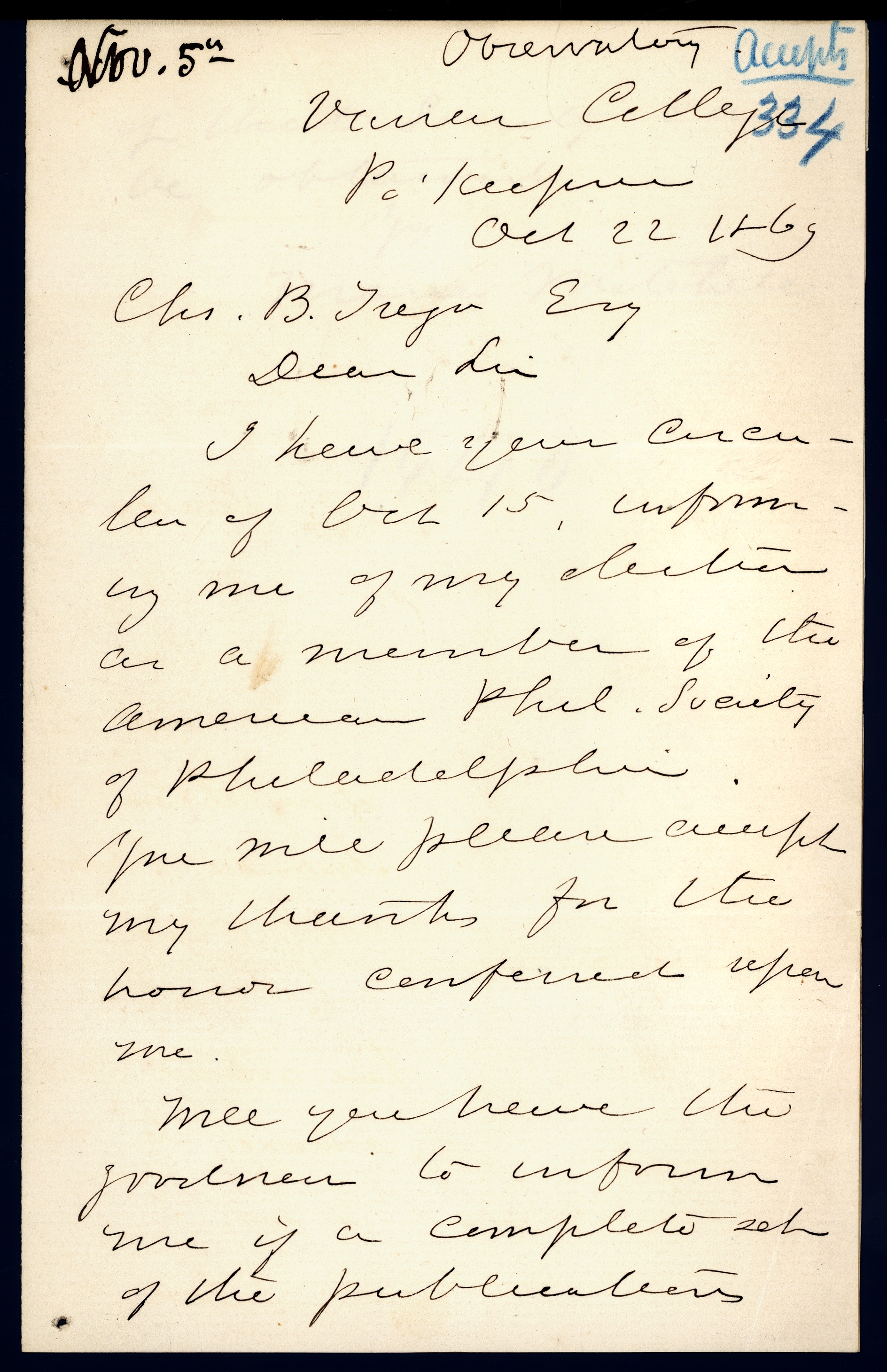Maria Mitchell, Determined Stargazer
In February of 1831, a 12-year-old Maria Mitchell quietly sat beside her father in their house on the isolated island of Nantucket and observed an eclipse of the sun. Mitchell, the first female astronomer in the United States, never forgot the awe she felt in those moments, and this experience, together with the teachings and encouragement of her Quaker father, William Mitchell, an astronomer and teacher who advocated equal education for girls, fueled her advocacy for science and mathematics education for girls and her dedication to astronomy.
Mitchell began her professional life as a librarian of the Nantucket Atheneum, a position she held for 20 years. It was a perfect job for the young astronomer—the recently opened Atheneum only was open a couple of hours a day, so she had many hours to read through the library’s books, and, as her brother Henry observed, provide herself with a college education. During the day she taught herself mathematics, including calculus, and the most advanced astronomy of the day. At night, she maintained her evening habit of studying the sky. On the night of October 1, 1847, at age 29, she discovered the comet that would be named “Miss Mitchell’s Comet,” using a two-inch telescope. Her achievement prompted the award of a gold medal from King Frederick VI of Denmark, and her election, in 1848, to the American Academy of Arts and Sciences. She was the first woman elected to the Academy, and remained the only woman in its ranks until 1943.
After leaving the Atheneum in 1856, she went on to work for the U.S. Nautical Almanac Office, but gave this up when Vassar College founder Matthew Vassar recruited her to join its faculty. When she learned that male professors received higher salaries, she asked for, and received, a raise. Mitchell channeled the precision and persistence needed for a career in astronomy into the education of her female students. She defied social conventions by having her female students go out at night for class work and celestial observations, and she brought noted feminists to her observatory to speak on political issues, among them Julia Ward Howe. Mitchell herself, in a paper she presented at the Fourth Congress of the Association for the Advancement of Women at Philadelphia in October 1876 asked: Does anyone suppose that any women in all the ages has had a fair chance to show what she could do in science? … The laws of nature are not discovered by accidents; theories do not come by chance, even to the greatest minds; they are not born of the hurry and worry of daily toil; they are diligently sought, they are patiently waited for, they are received with cautions reserve, they are accepted with reverence and awe. And until able women have given their lives to investigation, it is idle to discuss the question of their capacity for original work.

Maria Mitchell collected many honors during her career. In addition to being the first woman elected to the American Academy of Arts and Sciences, she was the only woman unanimously elected to the American Association for the Advancement of Science, and was the first American woman elected to the American Philosophical Society in 1869. She also was a leader in the formation of the American Association for the Advancement of Women, which later became the American Association of University Women. 14 years after her death in 1889, friends and supporters founded the Maria Mitchell Association on Nantucket in 1902. Later astronomers honored her by naming one of the moon’s craters after her. Maria Mitchell, dedicated scientist, passionate astronomer, and champion of the rights of women, deserves these honors and more.
Sources:
Maria Mitchell: A life in journals and letters. Edited by Henry Albers. Clinton Corners, N.Y.: College Avenue Press, 2001.
Maria Mitchell : Life, letters, and journals. Compiled by Phebe Mitchell Kendall. Boston, Mass.: Lee and Shepard, 1896.
